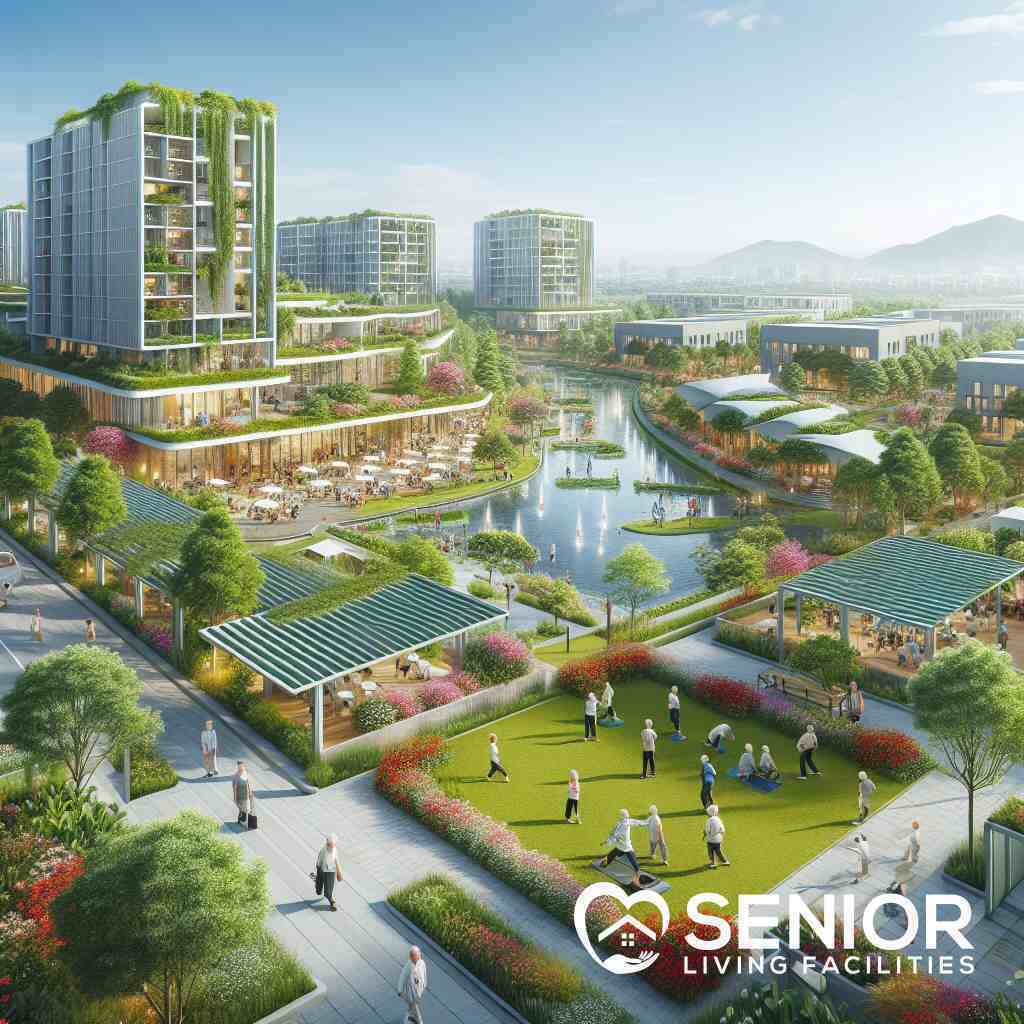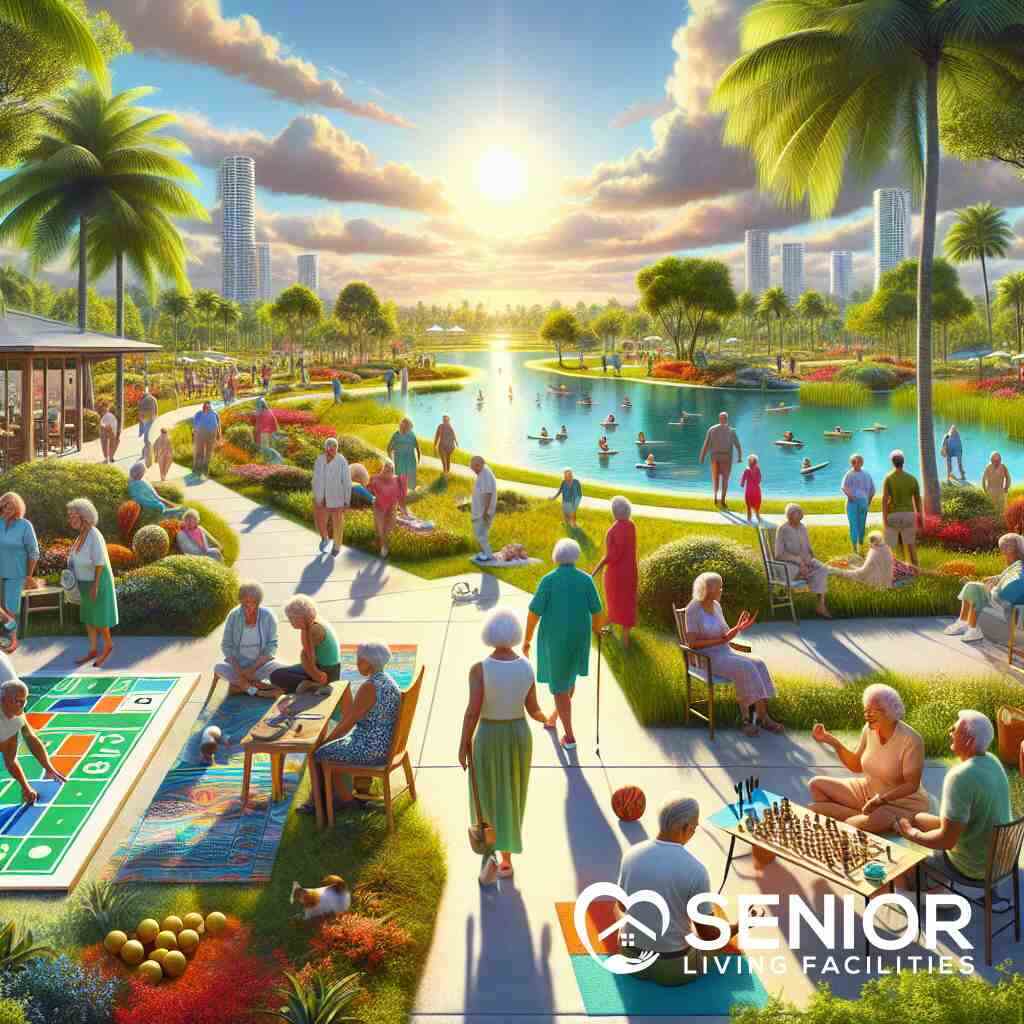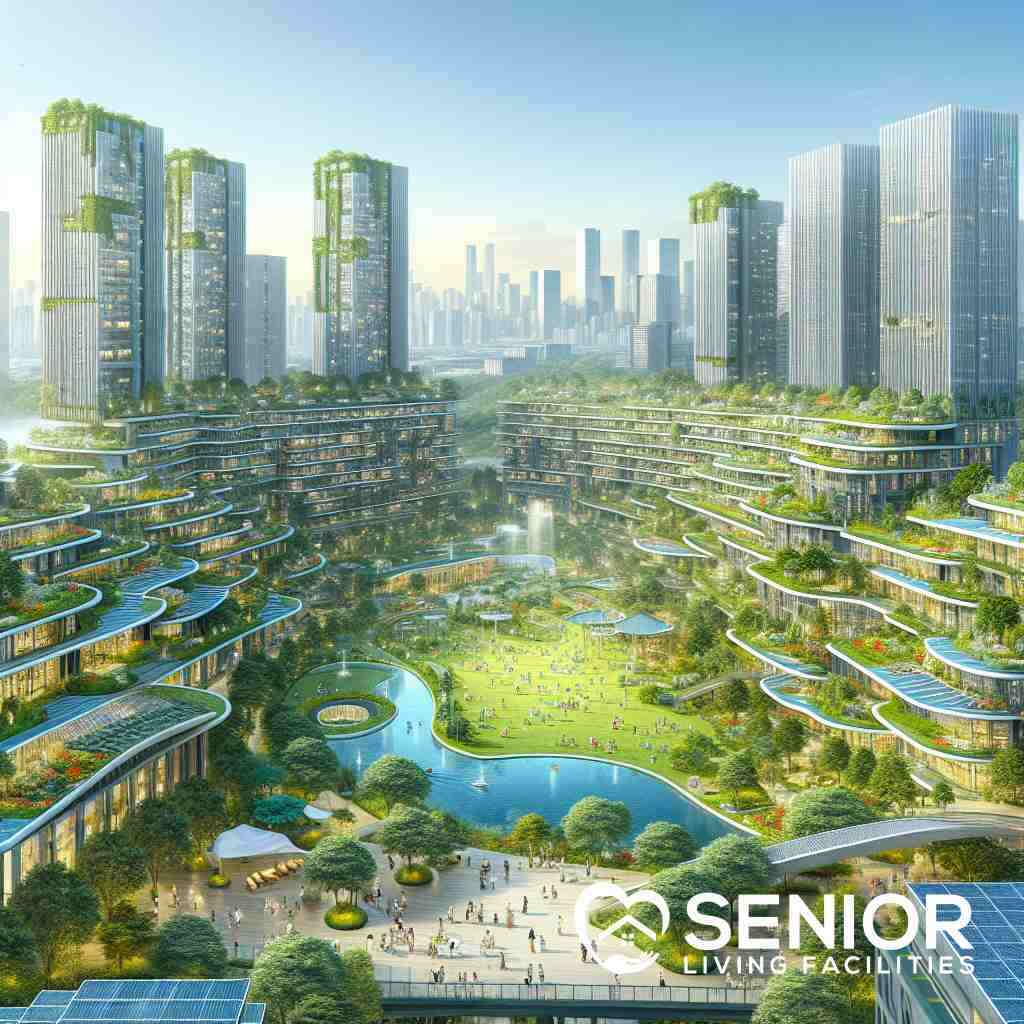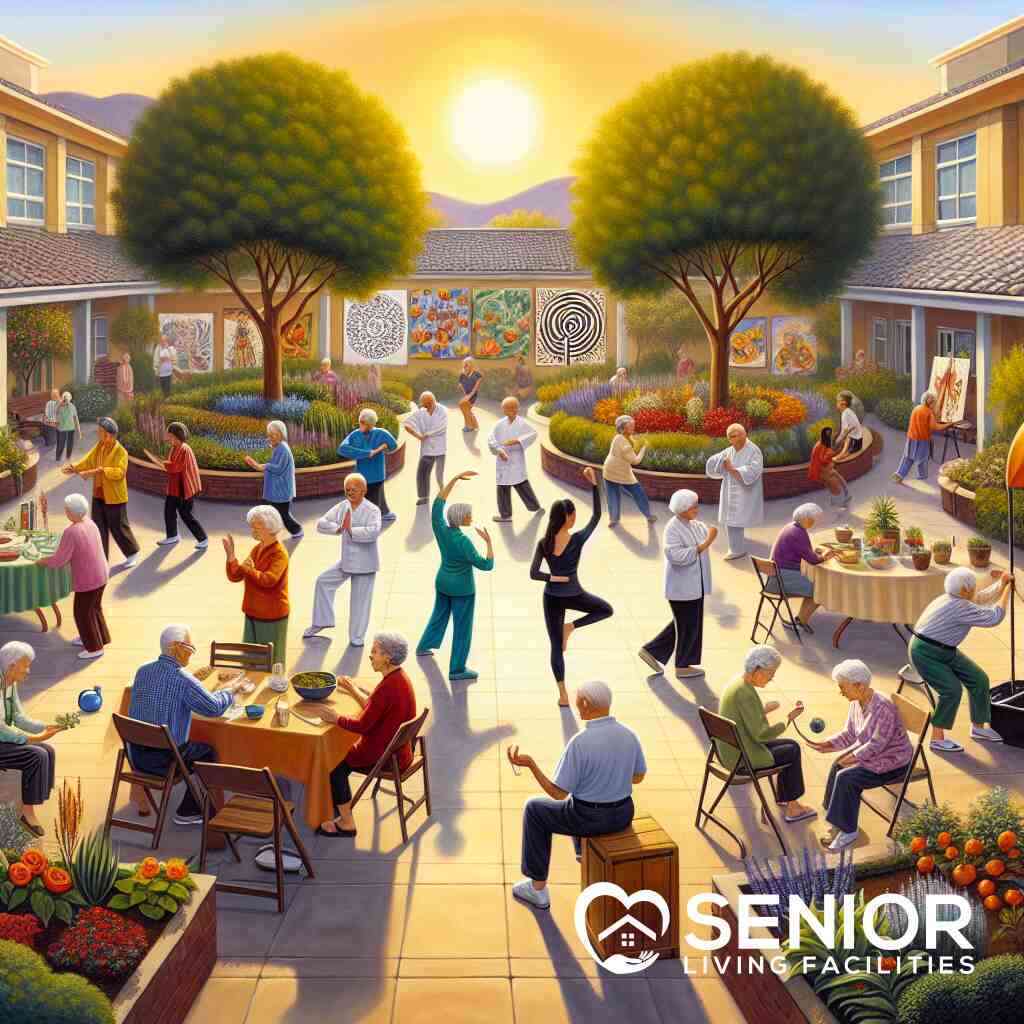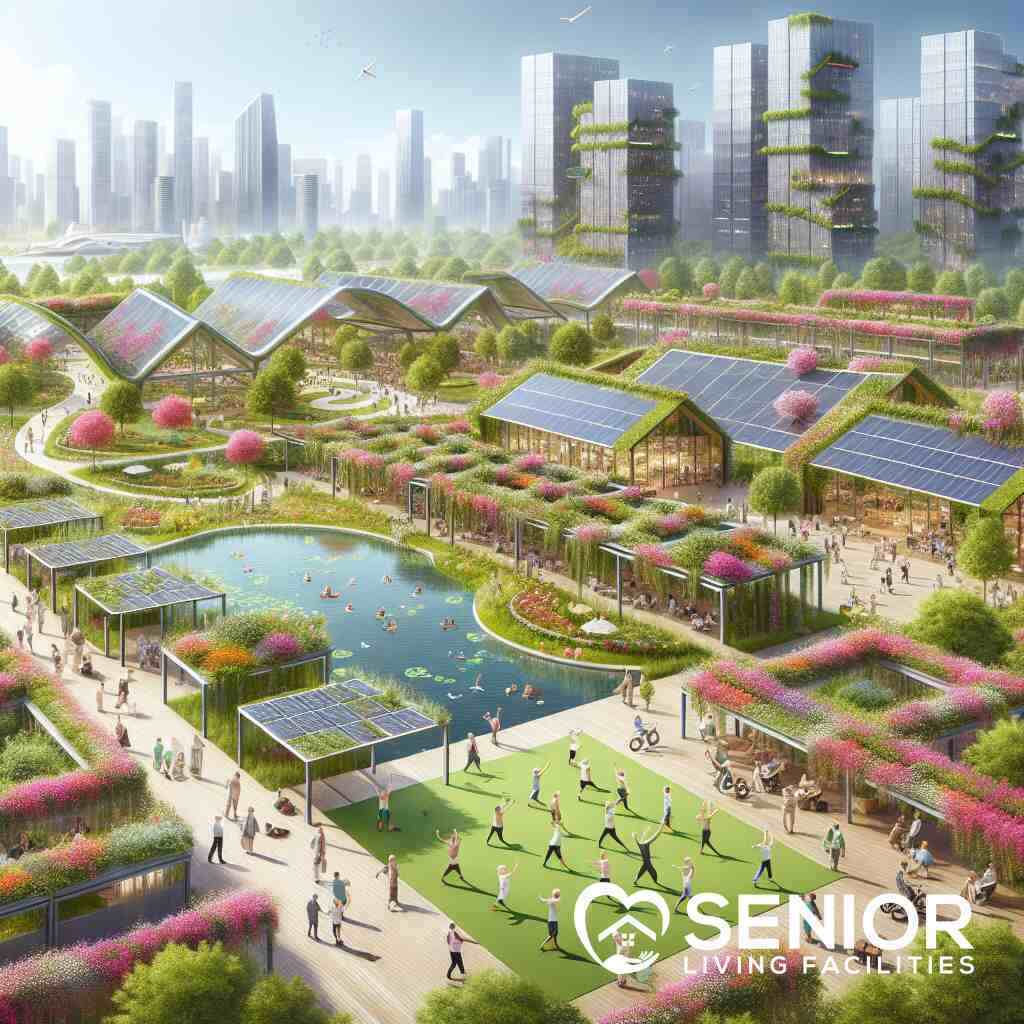
Navigating the Future of Senior Living Facilities Near Me
February 15, 2025
Opening Pathways to the Future of Senior Living
The Evolving Landscape of Elderly Care
In recent years, the landscape of elderly care has undergone a significant transformation. The emphasis has shifted from basic care provision to holistic, enriched experiences in senior living environments. Modern senior living facilities are evolving to emphasize community, connection, and comprehensive healthcare. The traditional models of senior housing are being reimagined to offer a more vibrant, inclusive experience for older adults. With the increasing aging population, the need for dynamic senior living solutions has never been more apparent. This evolution is fueled by a societal push towards more respectful, dignified living conditions for seniors, ensuring they maintain a high quality of life.
Understanding the Demand for Modern Senior Housing Solutions
As the baby boomer generation continues to age, there is a growing demand for modern senior housing solutions. Today’s seniors are looking for environments that not only provide care but also cater to an active, fulfilling lifestyle. This demand reflects a desire to enjoy life while receiving necessary support. Modern facilities are becoming more integrated with urban settings, allowing seniors to remain connected to their communities. Furthermore, senior living communities now offer everything from fitness centers and pools to clubs and social activities, tailoring experiences to individual preferences and needs. Technology also plays a pivotal role, providing security and ease in daily living. The Evolution of Healthcare Strategies in Senior Living Facilities
Key Trends Shaping the Future of Senior Communities
Several key trends are shaping the future of senior communities, making them more appealing and functional for today’s seniors. Sustainability is a major focus, with many facilities integrating eco-friendly senior living practices. These practices not only reduce environmental impact but also improve the quality of life for residents. Inclusive and intergenerational living models are becoming mainstream, promoting a diverse community atmosphere. Moreover, the integration of technology, such as smart home systems and health monitoring devices, is enhancing convenience and safety for the elderly. Senior care is also increasingly personalized, adapting to each resident’s changing needs over time. These trends point towards a future where senior living is not just about aging but living life to its fullest. What Is the Definition of Independent Living in Texas?
Innovations in Personalized Senior Care
Customizing Care: A New Era of Individualized Elderly Services
In today’s ever-evolving landscape of senior living, the focus has shifted towards offering customized senior care services. Every individual under care is unique, demanding services tailored to their specific needs and preferences. This personalization improves their quality of life by making care more resident-centered. Facilities now offer tailor-made programs that cater to varying health requirements and lifestyle choices, allowing elders to thrive in environments that respect their personal histories and future aspirations. Residents can participate in activities that resonate with their interests, transforming the senior living experience into a personalized adventure rather than just a predetermined routine. The transition into these communities becomes smoother, reinforcing comfort and satisfaction.
Customization in senior care also extends to meal plans that accommodate dietary preferences and health needs. Moreover, personalized wellness programs are incorporated to encourage both mental and physical health. This significant shift in care philosophy positions seniors as the architects of their aging journey, allowing them to live with autonomy and dignity. Such personalized approaches in elderly care affirm that each senior is at the center of their life story.
Technology as a Catalyst for Senior Living Enhancement
Advancements in technology have redefined the boundaries of senior care technology trends, revolutionizing how care is provided in senior living facilities. From wearable health monitors to smart home systems, technology acts as a pivotal force in enhancing the safety, health, and connectivity of elderly residents. These devices allow for real-time health monitoring, enabling caregivers to respond rapidly to any changes in a resident’s health status. Telehealth has also become a crucial component, offering convenient and accessible medical adviceand eand nsuring that seniors receive timely healthcare without the need for travel.
Moreover, communication technologies have helped bridge the gap between seniors and their families, fostering stronger connections despite physical distance. Virtual reality systems are now offering immersive experiences that provide both entertainment and cognitive stimulation. By integrating these technologies, senior communities can ensure an enriched living environment where the fears of loneliness and isolation are minimized.
Facilities today are experimenting with technology integration at all levels, aiming to create a seamless connection between residents, medical professionals, and families. This technological uplift in senior living communities promises a future where seniors are more empowered than ever before.
Inclusive and Intergenerational Living Models
The push for inclusive and intergenerational living models marks a significant departure from conventional senior housing arrangements. These revolutionary models aim to create vibrant communities where different generations cohabit, learning and benefiting from each other’s experiences. The idea promotes social interaction, reducing feelings of isolation commonly experienced by seniors.
Such models encourage environments where residents can engage in social exchange with younger generations, providing fresh perspectives and learning opportunities. The Ultimate Guide to In-Depth Senior Living Choices This intergenerational approach not only benefits seniors through active engagement and reduced loneliness but also enriches younger individuals with wisdom and life experiences only the elderly can offer. By fostering environments that support diverse age groups living harmoniously, these communities cultivate a sense of belonging for all residents.
By designing spaces that integrate various age groups, seniors find renewed purpose and energy, while younger community members develop empathy and understanding from their older counterparts. This multifaceted approach ensures that senior living is more about community collaboration than mere residency.
The Role of Digital Tools in Senior Care Coordination
The integration of digital tools has significantly enhanced senior care technology trends, providing novel ways to coordinate complex care needs efficiently. These tools streamline operations and facilitate communication between care providers, residents, and families, ensuring that every participant in a senior’s life is aligned in providing optimal care. Comprehensive digital platforms allow for meticulous tracking of medical data and resident preferences, enabling caregivers to anticipate needs and personalize care plans effectively.
Furthermore, digital platforms offer caregivers and medical staff an integrated system for managing appointments, medical records, and emergency responses. Seniors also benefit from apps and online platforms that enable them to manage their medication and health routines more independently. This digital revolution makes it possible to minimize human error while maximizing the accuracy and timeliness of care. What is the Role of Tech in Modern Senior Living Facilities?
Residents now have the freedom to participate in their health and daily schedules actively. By leveraging these advanced tools, senior living facilities create an ecosystem where seniors are buffered by seamless coordination and a proactive approach to health management. These innovations ensure that seniors and their caregivers are more connected, informed, and poised to tackle any challenges that aging gracefully might entail.
Sustainability and Inclusivity in Senior Living
Eco-Friendly Nursing Homes: The Next Step in Sustainable Senior Housing
As societal awareness of environmental impact grows, eco-friendly solutions are becoming integral to the future of senior housing. Modern senior living facilities are embracing sustainable practices, aiming to create environments that prioritize both ecological responsibility and resident wellness. Facilities are implementing renewable energy sources, like solar panels, to reduce carbon footprints and utility costs. Furthermore, sustainable architecture – featuring green roofs and energy-efficient building materials – is being used to construct environmentally responsible living spaces.
The adoption of recycling programs and water conservation initiatives contributes to these ecological goals while promoting a healthier lifestyle for residents. Eco-friendly nursing homes focus on utilizing non-toxic materials for both construction and day-to-day operations, enhancing air quality and overall resident health. By integrating these sustainable practices, senior living communities offer a forward-thinking approach that aligns with global aspirations for a better future.
Implementing Wellness-Focused and Holistic Approaches
Senior living facilities are increasingly prioritizing wellness-focused initiatives that provide holistic care services. These approaches consider physical, emotional, mental, and social well-being, creating a comprehensive care environment. The implementation of wellness-focused senior communities emphasizes preventive care, encouraging residents to engage in activities that promote health and vitality.
Holistic approaches in senior living integrate traditional medical care with therapeutic modalities such as yoga, meditation, and nutrition counseling, addressing diverse health needs. These programs foster a sense of community through group exercises and social activities, enhancing the residents’ quality of life. Facilities provide tailored wellness plans that cater to individual interests and health requirements, offering a personalized touch in care administration.
The objective of these senior communities is not merely to extend lifespan but to enrich the life experience, ensuring that residents thrive in holistic, supportive environments. By focusing on both wellness and personal growth, these facilities redefine aging, transforming it into an opportunity for continual development.
Proactive Health Management: Preparing for Aging in Place
Proactive health management is critical in preparing seniors for aging-in-place strategies. These strategies emphasize maintaining independence and enhancing comfort within one’s own home, delaying or avoiding the need for relocation to senior living facilities. By incorporating proactive health measures, facilities ensure residents possess the resources and support necessary to thrive independently.
This approach involves routine health assessments and personalized action plans aimed at sustaining long-term wellness. Facilities educate residents on nutrition, exercise, and medication management, empowering them to take charge of their health. Furthermore, advancements in smart home technology facilitate aging in place by offering systems that monitor vitals, ensure home safety, and provide emergency assistance.
With proactive health management, senior living communities enable a seamless transition to independent living when desired. This preparation instills confidence in seniors and their families, knowing that the supports are in place to maintain autonomy and dignity. It enhances the quality of life, offering contentment and fulfillment at every stage of the aging process.
Urban Planning for Senior-Friendly Communities
Urban planning plays a pivotal role in designing senior-friendly communities that encourage social interaction, accessibility, and safety. Cities are increasingly integrating features that accommodate the diverse needs of the aging population, creating inclusive environments.
These developments feature accessible public spaces, pedestrian-friendly walkways, and age-appropriate amenities to ensure that seniors remain active participants in society. They also consider the proximity of essential services such as healthcare facilities, grocery stores, and public transport, enhancing the convenience and ease of daily living.
As part of this vision, senior living communities are located closer to urban centers, promoting connectivity and engagement with the broader population. This strategic placement allows seniors to maintain an active, independent lifestyle while having ready access to a social support network. Thought-through urban planning fosters communities where seniors enjoy autonomy, engagement, and an enhanced quality of life.
Charting the Course for Future Generations
Policy Shifts: Supporting Elder Care Growth
In the evolving landscape of senior living, policy shifts are crucial in steering the future toward sustainable and effective elder care. Governments and organizations are increasingly recognizing the need to adapt existing policies to support the growing senior population better. Key changes include improving funding for geriatric services and implementing regulations that ensure high standards of care across all facilities. By focusing on comprehensive senior care policy changes, authorities aim to address the challenges posed by an aging population. These policies underscore the importance of access to quality healthcare and adequate accommodation options for seniors.
Policy shifts also prioritize affordable senior housing options, making retirement living accessible to a broader demographic. Such initiatives not only enhance living standards for existing seniors but also prepare society to manage the forthcoming waves of aging baby boomers. As policies evolve, they pave the way for inclusive, innovative senior living solutions that adapt to the diverse needs of future generations.
Community Development Focused on Senior Needs
Community development has become a focal point in ensuring that urban environments cater to the nuanced needs of seniors. Cities and towns are reevaluating their layouts to incorporate senior-friendly infrastructures. These include wider walkways, accessible public transport, and easily navigable intersections, all designed to facilitate independent mobility for the elderly. Community development also encompasses creating green spaces and recreational areas specifically for senior citizens to promote mental and physical well-being.
Efforts in community development extend beyond just physical infrastructure to include social and cultural inclusivity. Planning strategically places senior living communities within proximity to cultural centers, libraries, and community workshops. This provides seniors with ample opportunities for social interaction and cultural enrichment, fostering a sense of belonging and community. By focusing on these aspects, communities can evolve into supportive environments that allow seniors to thrive independently while staying connected. How to Compare Senior Living Facilities in Urban vs Rural?
Embracing Innovation in Retirement Communities
Innovation is a critical driver in redefining retirement communities, presenting innovative communities as vibrant spaces where seniors can enjoy life with greater ease and fulfillment. From adopting smart home technologies to integrating health-focused amenities, retirement communities are now more dynamic than ever before. Facilities are experimenting with innovative concepts like shared living spaces and adaptable layouts that promote flexibility and personalization.
Such innovations extend to community engagement, introducing interactive digital platforms for residents to participate in scheduling activities and communicating with fellow residents. Technologies are also enhancing care delivery as retirement communities leverage telehealth services to provide consistent and immediate healthcare access to residents. Beyond technology, innovation can be found in lifestyle offerings, where seniors can engage in diverse hobbies, from gardening to virtual reality experiences, ensuring every day is fulfilling and enriching.
The progression towards innovation in retirement communities underscores a broader cultural shift aimed at perfecting the balance between independence and supportive care. As these communities evolve, they offer a glimpse into the future of elderly care – a future rich with possibilities and opportunities for elderly individuals seeking a vibrant and engaged lifestyle.
A Visionary Conclusion for Tomorrow’s Senior Living
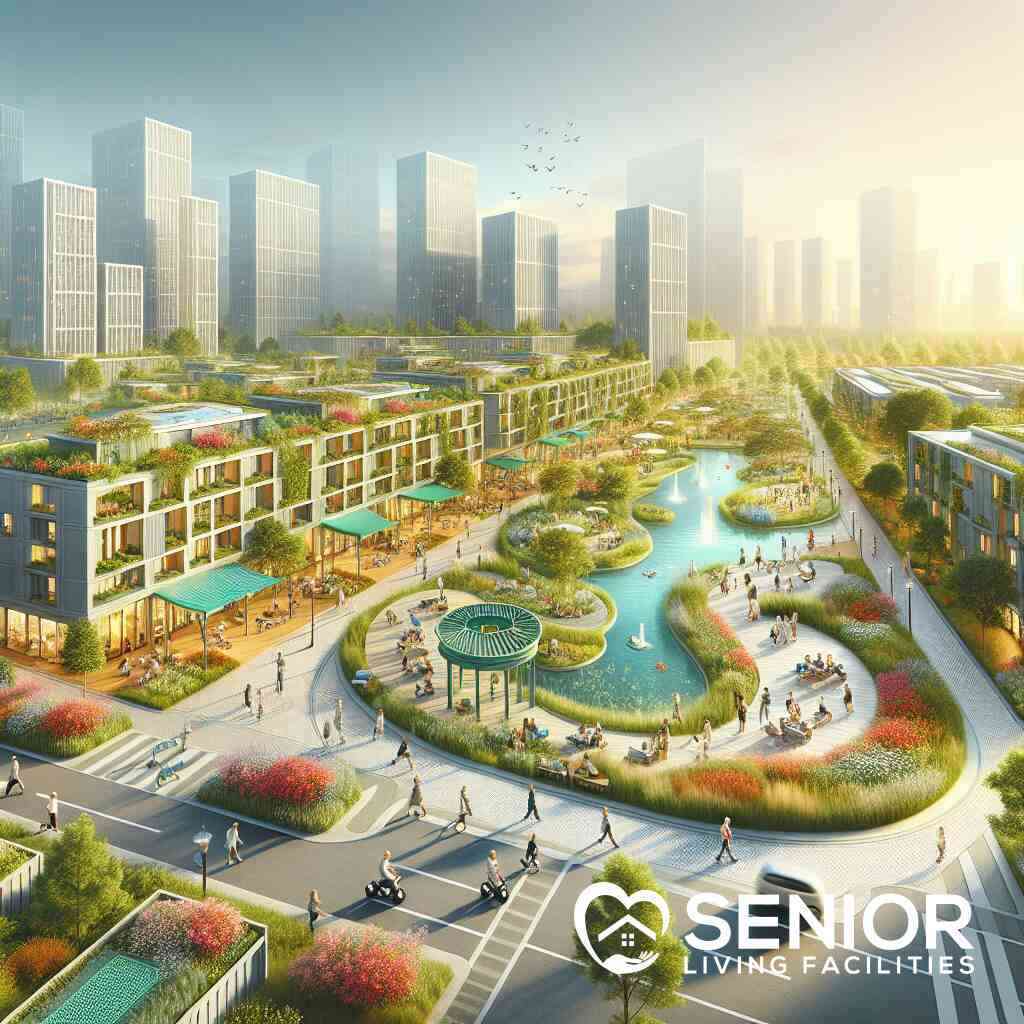
Bridging the Gap Between Tradition and Modernity
An exciting junction between tradition and modernity marks the future of senior living facilities. Today’s dynamic senior communities are creatively blending age-old comforts with cutting-edge innovations to deliver enriched living experiences. This fusion honors the cherished elements of traditional care while embracing the convenience and safety offered by advancements such as smart home technologies and condominium-style living.
Integrating technology into these environments doesn’t merely mean equipping facilities with gadgets. Still, it involves designing systems that respect the elderly’s need for simplicity while providing them with new opportunities for engagement and connectivity. These senior living solutions equip residents with the tools to enhance autonomy and connect with family and friends, thus reducing isolation. This effort resonates deeply with seniors who value both heritage and progress.
Furthermore, the introduction of gated community-styled layouts provides an added sense of security and exclusivity, factors critical to the overall satisfaction and peace of mind of senior occupants. As we bridge these worlds, the future of senior facilities becomes a testament to innovation harmoniously coexisting with valued traditions, creating a nurturing yet forward-thinking environment.
Nurturing the Evolution of Independent and Assisted Living
The evolution of both independent and assisted living is crucial in crafting optimal living environments for the aging population. As preferences shift toward more autonomous lifestyles, independent senior living solutions are evolving to offer rich experiences that balance freedom with access to support when needed. These solutions are designed to cater to active seniors who wish to maintain control over their lives while having the reassurance of a supportive network.
Senior facilities are increasingly adopting an inclusive approach that incorporates modern conveniences, communal engagement, and diversified care plans. Personalized assistance allows for the seamless transition between independent living and more structured care environments, ensuring continuity and comfort for residents facing changing needs. This approach nurtures a sense of empowerment, maintaining dignity and respect as central tenets of care.
The ongoing innovation in these living models fosters environments where senior residents are seen not merely as participants but as genuinely engaged community members. This paradigm shift encourages seniors to be active architects of their own experiences, transforming what it means to age responsibly and gracefully. Why Choose Senior Living Facilities Near You in 2024? As these communities cater to evolving needs and preferences, they redefine the frameworks of senior living, pushing boundaries to create enriched lifestyles that will continue to benefit future generations.
Frequently Asked Questions
Question: How do Senior Living Facilities incorporate modern senior housing solutions in their communities?
Answer: Senior Living Facilities is committed to enhancing the quality of elderly care by integrating modern senior housing solutions. Our facilities emphasize community, connection, and comprehensive healthcare, moving away from traditional models towards offering enriched experiences. This includes the integration of fitness centers, social clubs, and pools, catering to the active, fulfilling lifestyles seniors demand. Our communities are designed to keep seniors connected with urban settings, allowing them to enjoy a dynamic living environment while providing state-of-the-art care tailored to individual needs.
Question: What role does technology play in Senior Living Facilities’ services?
Answer: At Senior Living Facilities, we understand the pivotal role technology plays in enhancing our service offerings. From smart home systems to wearable health monitors, technology is crucial in promoting safety, health, and connectivity among our residents. Our facilities also incorporate telehealth services, allowing seniors to receive timely medical advice without the need for travel. Unpacking the Role of Tech in Senior Living Facilities Today By bridging the gap between seniors and their families through communication technologies, we ensure stronger connections despite physical distances.
Question: How do Senior Living Facilities approach inclusivity and intergenerational living models?
Answer: Inclusivity and intergenerational living models are at the heart of Senior Living Facilities’ philosophy. What Is the Critical Role of Community in Senior Living? Our communities strive to create vibrant, diverse atmospheres by encouraging social exchange between different generations. This not only reduces the isolation often experienced by seniors but also enriches younger individuals with invaluable wisdom. By fostering active engagement among residents of all ages, we cultivate a sense of belonging and community, ensuring that everyone can enjoy a fulfilling lifestyle. How Senior Living Facilities Foster Community Wellness
Question: What wellness-focused and holistic approaches do Senior Living Facilities offer in their communities?
Answer: Senior Living Facilities places a great emphasis on wellness-focused and holistic approaches. Our senior communities offer comprehensive care environments that promote physical, emotional, mental, and social well-being. This includes preventive care programs, group exercises, yoga, meditation, and nutrition counseling. Best Practices for Nutritional Excellence in Senior Communities Our tailored wellness plans are designed to cater to individual interests and health requirements, assuring that the aging experience is an enriching journey. How Senior Living Facilities Redesign Daily Well-Being Routines
Question: What sustainable practices do Senior Living Facilities adopt in their communities to align with the themes discussed in Navigating the Future of Senior Living Facilities Near Me?
Answer: Sustainable living is a core component of our approach at Senior Living Facilities. We implement eco-friendly practices such as using renewable energy sources like solar panels, recycling programs, and water conservation initiatives. Our buildings feature sustainable architecture with green roofs and energy-efficient materials, enhancing resident health and reducing environmental impact. These practices ensure our communities are not only environmentally responsible but also improve the quality of life for our residents, making our facilities a preferred choice for conscious living.
